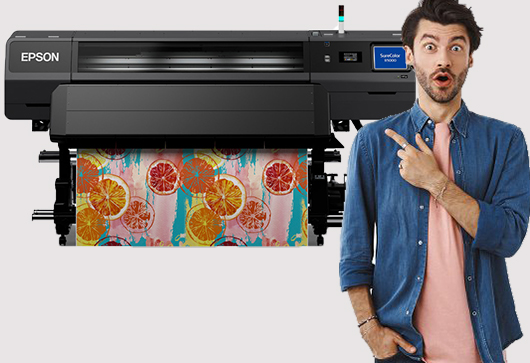Epson Canon Pantum Analyze the Print Market in Argentina
Epson Canon Pantum Analyze the Print Market in Argentina
The market has been through tough times in Argentina over many years, but there is optimism for what might be ahead.
So say a number of printer OEMs featured in the Enfasys run Channel Talks which dedicated its September 23 online Spanish-language video forum to the current situation facing the printing market in Argentina.
Participating panelists included Gabriel Miranda, Epson’s channel manager for VARs, business inkjet, printers and scanners of Epson. Others were Hans Rehr from Canon, Laura Yustes from Pantum Argentina and Carlos Scimone from the CAMOCA industry association.
 According to Scimone (pictured), the use of printers and photocopiers, among other devices, has weakened in Argentina in the last ten years to almost half. “This drop is not related to moving away from paper as a means of communication, but is simply due to an accessibility problem, or rather to not being able to access modern equipment in offices,” he said. “However, I am convinced we are going to recover in this market and I estimate the sale of this equipment will improve during 2021, thanks to the greater purchasing power by consumers.”
According to Scimone (pictured), the use of printers and photocopiers, among other devices, has weakened in Argentina in the last ten years to almost half. “This drop is not related to moving away from paper as a means of communication, but is simply due to an accessibility problem, or rather to not being able to access modern equipment in offices,” he said. “However, I am convinced we are going to recover in this market and I estimate the sale of this equipment will improve during 2021, thanks to the greater purchasing power by consumers.”
 Epson’s Gabriel Miranda (pictured) agreed with Scimone. “The market has not been growing and is very flat in Argentina,” he said. “The volume of printing has been falling, but it also has to do with how the market is adapting to digitization. Although some segments fall, new ones emerge and they are the ones that help to continue driving the volume of printing.”
Epson’s Gabriel Miranda (pictured) agreed with Scimone. “The market has not been growing and is very flat in Argentina,” he said. “The volume of printing has been falling, but it also has to do with how the market is adapting to digitization. Although some segments fall, new ones emerge and they are the ones that help to continue driving the volume of printing.”
Miranda acknowledged that staff working remotely as a result of being in quarantine from the pandemic generated “a migration to decentralized, more compact, less robust computers with good connectivity characteristics accompanied by software.” Miranda said the challenge in these times is “to monitor that park and how to manage the logistics of these devices,” anticipating that all this migration “will change the shape of the business with an adaptation of the brands and suppliers in the market.”
 For her part, Laura Yustes (pictured), from Pantum, added that “we have to adapt to current changes: today we are not only talking about printing, but also about digitization to be able to save that document, for example, or what that the user or the companies need to store.”
For her part, Laura Yustes (pictured), from Pantum, added that “we have to adapt to current changes: today we are not only talking about printing, but also about digitization to be able to save that document, for example, or what that the user or the companies need to store.”
 Canon’s Hans Rehr (pictured) offered a complementary view: “While previously the print market was showing some signs of maturity, with the proliferation of management and automation apps and software, print volumes began to be threatened. But today, with the effects of the pandemic, it somehow makes us rethink the printing business in the short or medium-term.”
Canon’s Hans Rehr (pictured) offered a complementary view: “While previously the print market was showing some signs of maturity, with the proliferation of management and automation apps and software, print volumes began to be threatened. But today, with the effects of the pandemic, it somehow makes us rethink the printing business in the short or medium-term.”
He added: “Today there are printing needs at home, either for teleworking or for students. But corporate or industrial printing continues with a relevant decline, boosted by the crisis of the pandemic.”
The panelists agreed that high-demand printing is the sector that is suffering most in this crisis, but there are business opportunities appearing in the low-demand printing sector and that momentum towards digitization is being observed in some companies.
According to Carlos Scimone, “the education sector has certain shortcomings and needs many printing systems, to be able to contribute with the students and not just virtual elements through the screens.” He warns that “we must not forget that reading on the screen is harmful to health, and in many cases, we must begin to re-analyze the possibility of having paper to read from, learn and review. In other words, we should see many abandon the very extensive reading on-screen.” He also mentioned that, in these last months of 2020, they are seeing how homework also needs, in many cases, the support of a multifunctional device. “In 50% of the cases, it is essential to have a multifunction printer to work at home. I am referring to the issue of scanning, viewing documentation, doing a survey, studying a case, etc,” explained Scimone.
Inkjet or Laser?
The only question that the speakers answered was the one posed by the Gui del Reciclador, about Epson’s vision regarding the prevalence of inkjet over laser. Canon’s Hans Rehr acknowledged that “the ink had seen very favorable demand in recent times and is associated with working from home and the impulse of printing through smaller devices.”
But from the point of view of cost in the office environment, “inkjet has very positive characteristics in terms of the cost of printing, it does not necessarily happen from the point of view of the investment of the hardware.” Rehr also pointed out that “it does not necessarily share the same printing and monitoring management platforms as does laser, today, which is a more advanced technology for the office environment.” However, they support Canon ink growth in different print segments.
Epson’s Miranda believes that ink offers the office customer an option, clarifying that “before office printing was synonymous with laser and today it is no longer like that, with inkjet options that equal laser quality.” He also stressed that the “low operating costs in inkjet technology are a very positive alternative for many companies.”
Finally, each of the brands showed aspects of their portfolios that they offer to the current Argentine market.
Related:
- Can Latin America Manufacture its own NBCs—and be Profitable?
- Remembering when Product Sales Increased
- Confronting Steep and Scary Changes – What is the Future?
Comment:
Please add your comments below about this news story, “Epson Canon Pantum Analyze the Print Market in Argentina.“







Leave a Comment
Want to join the discussion?Feel free to contribute!